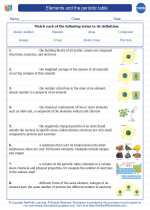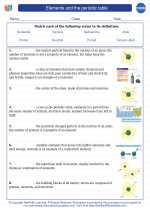Human Impact on the Environment
Human activities have a significant impact on the environment, and this impact can be studied from a chemistry perspective. The following are some key aspects of human impact:
1. Air Pollution
Human activities, such as the burning of fossil fuels and industrial processes, release pollutants into the atmosphere. These pollutants can include carbon monoxide, sulfur dioxide, nitrogen oxides, and particulate matter. These pollutants can lead to respiratory problems, acid rain, and contribute to climate change.
2. Water Pollution
Industrial waste, agricultural runoff, and improper disposal of chemicals can contaminate water sources. This contamination can lead to health problems and harm aquatic ecosystems.
3. Soil Contamination
Chemicals from agriculture, mining, and industrial activities can contaminate the soil, affecting the fertility of the land and potentially entering the food chain.
4. Climate Change
Human activities, particularly the release of greenhouse gases such as carbon dioxide and methane, contribute to changes in the Earth's climate. This can lead to more frequent and severe weather events, shifts in ecosystems, and rising sea levels.
Study Guide
To understand the human impact on the environment from a chemistry perspective, consider the following topics for further study:
Air Pollution
- Chemical composition of air pollutants
- Formation of smog and its effects
- Role of catalytic converters in reducing air pollution
Water Pollution
- Chemical pollutants in water sources
- Methods for water treatment and purification
- Impact of pH and heavy metal contamination on water quality
Soil Contamination
- Types of soil contaminants and their sources
- Effects of soil contamination on plant growth and human health
- Remediation techniques for contaminated soil
Climate Change
- Greenhouse gases and their impact on the Earth's atmosphere
- Carbon footprint and ways to reduce it
- Role of chemistry in developing renewable energy sources
By studying these topics, you can gain a deeper understanding of the chemical processes underlying human impact on the environment and explore potential solutions to mitigate these impacts.
.◂Chemistry Worksheets and Study Guides High School. Elements and the periodic table

 Worksheet/Answer key
Worksheet/Answer key
 Worksheet/Answer key
Worksheet/Answer key
 Vocabulary/Answer key
Vocabulary/Answer key
 Vocabulary/Answer key
Vocabulary/Answer key
 Vocabulary/Answer key
Vocabulary/Answer key
